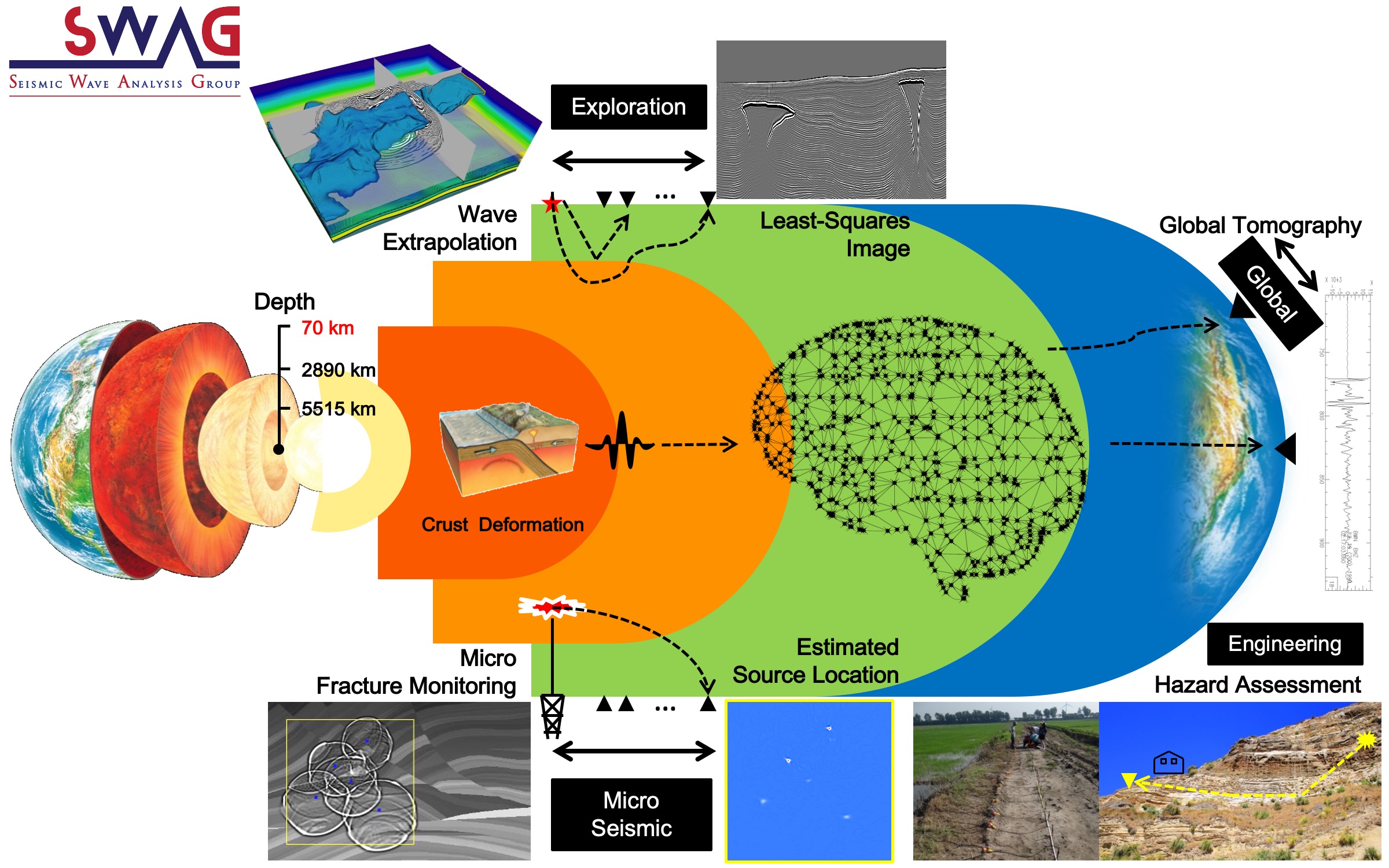ML-based Research
Artificial intelligence, and specifically, machine learning (ML) has recently emerged as a powerful tool to address many of the challenges we face in life. We aim at SWAG to be a leading hub for utilizing innovated ML methods, beyond the conventional supervised learning, to help us use recorded seismic data to illuminate the Earth at all scales and make the proper prediction of its content. From fault detection to salt boundary picking to image resolution enhancements, the quest to teach our computing devices how to perform these tasks accurately, as well as, quantify the accuracy has become our main objective.
Utilizing recent advances in machine learning algorithms and the availability of the modules to apply such algorithms, we have managed to focus on developing solutions on a wide range of seismic exploration applications, with a special focus on waveform inversion. We share some of these applications below.

The challenges concerning the three main (important) components of the waveform inversion machinery using ML.
Innovative Machine Learning application our group has worked on.
Using convolutional autoencoders (CAE), fully connected neural networks (FCNN) and recurrent neural networks (RNN) with 4D seismic.
A method to automate traveltime picking for multiple microseismic events by utilizing a visual geometry group (VGG) neural network.
A novel approach of traveltime inversion aiming to enhance the quality of the near-surface tomograms.